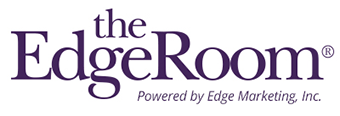by Cindy Kremer Moen
Content has become an essential tool for businesses to engage with their audiences. Gating content, or requiring users to provide personal information before accessing specific material, has emerged as a common strategy in relation to sharing content. While this approach offers benefits such as lead generation and eventually revenue generation, it also presents challenges in terms of user experience and reach. What are the pros and cons of gating content? And what impact might gated or ungated content have on your business?
Pros of Gating Content
Gated content has become the gold standard for lead generation in business-to-business marketing. Potential clients are willing to give you their personal information – knowing they might now become a sales prospect – just to gain access to your content when it is perceived as valuable. The pros of gating content include:
Lead Generation: Gating content allows you to collect valuable user data, such as email addresses or demographic information, in exchange for access. You can use this data to build a robust customer database and drive targeted marketing campaigns. By capturing user data, you can nurture prospects and convert them into leads and then clients.
Audience Segmentation: Content gating allows you to segment your audience based on the type of content they are interested in. This information can be used to personalize future communications and deliver content that is more relevant to specific groups, leading to better engagement.
Quality Control: Gating content ensures that only those genuinely interested in your material will access it. By using a form as a barrier, you can filter out casual visitors and focus on catering to a more engaged and invested audience. This can enhance the overall quality of interactions.
Enhanced Data Collection: In addition to gathering lead information, gating content can provide valuable data on user behavior, preferences and interests. You can then analyze this data to optimize your content strategy and marketing efforts.
Cons of Gating Content
Recently, some businesses have skipped the gating process entirely, opting for free, easy access to valuable content with the expectation that more people having access to their content will lead to more prospects. The cons to gating content include:
Reduced Reach: Implementing a content gate can limit the reach and exposure of your material. Many users may be unwilling to provide personal information, resulting in a smaller audience. This reduced exposure can impact brand awareness, diminish organic reach and hinder the potential for viral or organic growth. When content is behind a gate, search engines and social media platforms may not be able to index or share it, leading to reduced organic reach and potentially impacting your website traffic.
User Experience: Gated content often creates a barrier between the potential audience and the desired material, negatively affecting user experience. Visitors who encounter multiple content gates or complex registration processes may feel frustrated or discouraged from engaging further. It is essential to strike a balance between collecting information and providing a seamless user experience to mitigate these concerns.
Perceived Value: The decision to gate content may influence how users perceive its value. If users encounter multiple instances of low-quality or uninteresting gated content, they may become skeptical about providing personal information in the future. You should ensure your gated content offers value and justifies the gating strategy to maintain user trust.
Missed Opportunities for Engagement: Gating content prevents casual visitors from accessing it, which means you might miss opportunities to engage with a broader audience. Some users may not be ready to provide their information yet but would still benefit from consuming your content.
Competitor Advantage: If your competitors offer similar content without gating it, users may prefer their approach, as it requires less effort and zero sharing of personal information.
Conclusion
Gating content has its advantages and disadvantages, and whether you should use it depends on your specific goals and type of content. While it can provide lead generation opportunities and eventually revenue streams, it may also limit reach and compromise user experience. Striking the right balance between capturing user information and delivering a seamless experience is crucial to maximizing the benefits of gating content while minimizing the drawbacks.
Ultimately, you should carefully assess your target audiences, objectives and the value proposition of your content before deciding whether gating is an appropriate strategy. Excessive gating may lead to user frustration, reduced website traffic and a negative impact on search engine optimization efforts. A thoughtful approach, where some high-value content is gated and other content is easier to access, likely will yield the best results.
Did you know?
According to Instapage.com, as much as 80% of B2B content marketing assets are gated.
About the Author
Cindy Kremer Moen has helped Edge Marketing clients with strategies and tactics to meet their goals since 2006.
She and her husband have two college-aged sons and recently relocated to fulfill a lifelong dream of living near the shores of Lake Superior.



